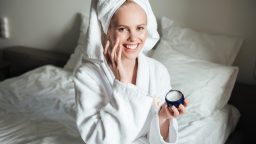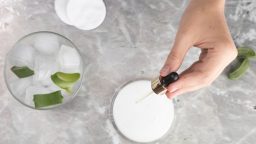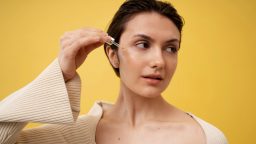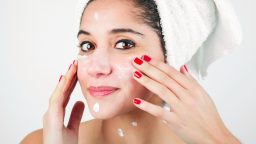With the rise of online shopping and the growing demand for luxury beauty products, counterfeit beauty items have become increasingly common. Fake beauty products not only fail to deliver the promised results but can also pose serious risks to your skin and health. Counterfeit goods are often made with harmful ingredients and poor-quality materials, making it essential to know how to identify them. Here’s a guide to help you spot counterfeit beauty products and protect yourself from buying fake items.
- Check the Packaging
The packaging of beauty products is often the easiest way to spot a counterfeit item. Counterfeiters will often replicate the design of a well-known brand, but the details are usually off.
- What to look for:
- Spelling errors: Fake products often have misspelled brand names or ingredients.
- Poor-quality print: The font, logo, or images may look slightly blurry, inconsistent, or low quality. Real products typically have sharp, clear print.
- Inconsistent color or packaging: The colors of the packaging, labels, or even the product itself might be slightly different from the authentic item.
- Packaging material: Fake products might come in thinner, flimsy packaging compared to the high-quality, sturdy materials used by reputable brands.
- Seal quality: Check for security seals or stickers. Counterfeit products may have poorly made or missing seals.
- Example: Authentic products from high-end brands like Chanel or Dior typically have high-quality, luxurious packaging with no imperfections. Counterfeits often have noticeable differences in font, color, or texture.
- Examine the Price
If a beauty product is significantly cheaper than its normal retail price, it’s a huge red flag. Counterfeit products are often sold at a much lower price than the authentic version to attract buyers.
- What to look for:
- If the price seems too good to be true, it probably is. Luxury beauty items or popular skincare products rarely go on sale for drastic discounts, especially from unauthorized sellers.
- Be cautious when buying from third-party websites or sellers who offer deep discounts on high-end products.
- Example: If you find a Yves Saint Laurent Touche Éclat concealer being sold for $15 when its typical price is around $40-$50, this should raise suspicions.
- Inspect the Product’s Texture and Consistency
Counterfeit beauty products often use cheap, subpar ingredients to mimic the look and feel of the original. This can lead to a significant difference in texture, consistency, and performance.
- What to look for:
- Texture: If the product feels too watery, oily, or gritty, it could be a fake. For example, a foundation might feel lighter or thicker than expected, or a moisturizer could be too greasy or too runny.
- Color and fragrance: A counterfeit product might have an off-putting scent or an unusual color. High-end brands typically have a specific fragrance profile, and their products are consistently formulated to deliver a particular shade or finish.
- Example: If you’ve bought a Fenty Beauty foundation and it feels heavier or too thick compared to what you’ve experienced at the store, it could be counterfeit.
- Look for Missing or Inconsistent Product Information
Authentic beauty products often provide detailed information about the product’s ingredients, directions, and usage instructions. Counterfeit products may lack some of this essential information or have inconsistencies in labeling.
- What to look for:
- Ingredient list: Fake products might not list ingredients, or they might use vague terms like “fragrance” without specific details.
- Expiration date: Legitimate products always have an expiration date or a batch code. Counterfeit products may have no expiration date or a non-standard format.
- Manufacturing information: Genuine products typically list the country of origin and manufacturing details. Counterfeits may either not include this information or display it in a way that looks odd.
- Example: If the Estée Lauder Advanced Night Repair serum lacks any ingredient list or uses vague terms like „parfum” instead of specific ingredients, it could be fake.
- Check the Seller’s Reputation
Buying beauty products from unauthorized sellers, especially on websites like eBay, Amazon, or third-party sites, increases the likelihood of purchasing a counterfeit item. Always check the reputation of the seller before making a purchase.
- What to look for:
- Verified sellers: Stick to reputable websites and official brand stores. Brands like Sephora, Ulta, or Cult Beauty only sell authentic products.
- Customer reviews: Look at the reviews and ratings of the seller or product. Be wary of sellers with no reviews or suspiciously positive feedback that sounds too good to be true.
- Return policy: Reputable retailers usually offer a return policy. Be cautious if the seller has no clear return or refund policy.
- Example: If you’re buying from a third-party seller on Amazon, ensure they are an authorized retailer. Even Amazon itself can sell counterfeit products through third-party sellers.
- Smell the Product
Many high-quality beauty products, especially perfumes and skincare, have a distinctive scent. Counterfeit products might not replicate the fragrance perfectly, and the smell could be off or overly synthetic.
- What to look for:
- Fragrance: If the product smells too strong or doesn’t match the expected scent, it could be counterfeit. For example, if a high-end perfume smells too chemically or fades too quickly, it’s a sign of a fake product.
- Skin products: If skincare products have a harsh or unpleasant scent, or don’t smell like the typical fragrance used by the brand, they may be fake.
- Example: Fake Chanel No. 5 perfume might have a synthetic, overly chemical smell rather than the rich, floral notes of the authentic product.
- Check the Texture of the Packaging (Plastic Caps, Applicators)
Another giveaway of counterfeit beauty products is poor-quality packaging. Authentic brands invest in high-quality packaging with sturdy, well-made applicators, caps, and containers.
- What to look for:
- Plastic quality: Cheap, flimsy plastic is often used for counterfeit products. Genuine beauty products typically have durable packaging that feels solid to the touch.
- Loose applicators: Fake makeup products might have cheap, poorly made applicators that feel flimsy or don’t work as effectively as the original.
- Example: A MAC lipstick with a flimsy, poorly fitting cap or a cheap applicator on a mascara wand is likely to be fake.
- Verify the Batch Code or Serial Number
Most authentic beauty products have a unique batch code or serial number that can be used to verify their authenticity. This number is often located on the packaging or the bottom of the product.
- What to look for:
- Batch code: Many beauty brands allow you to enter the batch code on their website to check if the product is authentic. If you’re unsure, you can always reach out to the brand’s customer service for verification.
- Serial number: If the product does not have a batch code or serial number or if the number does not match with the brand’s records, it could be a counterfeit.
- Example: Use the batch code on your MAC foundation and verify it with the brand to check if it’s authentic.
Conclusion
Identifying counterfeit beauty products requires attention to detail and being mindful of where and how you shop. Always buy from authorized retailers and pay attention to signs like poor packaging, unusual pricing, missing product information, and inconsistent quality. Counterfeit beauty products can harm your skin and waste your money, so by learning how to spot them, you can ensure that your beauty products are safe, effective, and authentic. Remember, if something seems too good to be true, it probably is. Stay cautious and informed to protect your skin and your wallet.





